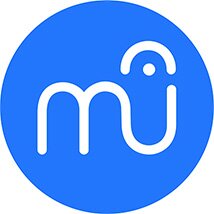How to Write Sheet Music
Jump to: By Hand | Multi-Platform| Windows | Mac
One common desire is to create music in cypher notation or jianpu. Below are a few resources to get you started.
Write By Hand
The fastest way to get your music on paper is to write it by hand. Here are sheet music templates you can print out to write your music. See the Finger Techniques page for the technique symbols.
Use Software
The sad fact of the matter is there is not a lot of English-language software that both know the rules of cypher notation formatting and are easy to use. What I do know if below.
If you have coding knowledge, consider joining the third option which is currently under development. MusicXML 3.0 was released with partial support for jianpu / cypher notation in 2011, so technology is slowly moving in that direction, but I have yet to find software that fully supports writing in it.
Multiple Platforms - MuseScore
This is in active development. When I first wrote this page in 2017 MuseScore was unable to create cipher notation. As of May 2018 a great deal of work has been done, making this something to watch. I have not yet had the chance to use the new version that includes jianpu support, but you can get it free here. You can get a look at its development on Github here. There is also a plugin, though it needs to be updated for MuseScore3
July 2019 Update: There is a Japanese professor who is creating plugins for asian instruments in MuseScore. A few examples of his work:
Jianpu - The demo screenshots for this suggest it may use periods instead of dots above and below.
For Windows
Windows has the Simplified Musical Notation Input System, SimpErhu for short. It plugs into and requires Microsoft Word: http://simperhu.weebly.com/download.html It's a macro-enabled template you can add to Microsoft Word that gives you shortcuts and additional menus to create cipher notation, staves, and the various glyphs and 汉字 comments. Instructions are provided in English and Mandarin.
Technically this works on Macs as well as it does plugin to Microsoft Word for Mac, but the only version I have tested it on is 2011. I imagine it would work better with Office for Mac 2016 / Office 365 but I can't confirm. On 2011 only half of the functions and glyphs integrate. It's still useable, but there are many hotkeys that conflict with the defaults in Mac OS.
Summary: SimpErhu is fast to get started in and easy to navigate, but is limited to transcribing existing scores. Requires Microsoft Word.
Music Writer Xu is a numeric notation-first authoring platform that allows conversion to staff notation. It appears to be free, so long as you contact the developer and ask for a code.
Don’t be intimidated by the chinese on the website - they have a fully translated English guide and the ability to switch between English and Chinese in the interface itself.
Website: http://musicwriterxu.com/
Guide: http://musicwriterxu.com/MusicWriterUsersGuide_English4.5.pdf
For Mac
MAC OS has the powerful NoteabilityPro. Originally a multi-hundred dollar composing suite created by a partnership between a composer and a programmer at the University of British Columbia in Vancouver, it has now been released for free. Download it before they change their minds!!! http://debussy.music.ubc.ca/download.html I joke, but this is some seriously capable software. It's everything you need to compose full scores and will even play the music back to you. This, for me, has been huge. Suddenly I can practice multi-part pieces even when other musicians aren't available!
A major caveat: Noteability Pro spaces notes based on duration- just like in staff music, a whole note has more space after it than an eighth note. Most jianpu scores I have seen group notes based on beat - so regardless of duration, all notes that fill out a beat are printed together. There is not currently a way to adjust that spacing.
Summary: NoteabilityPro takes more time to get started in but it rewards you with far more features. Chief among them: you can listen to your score, allowing you to catch transcription errors you might not have otherwise noted. And you know, everything else you might need to create 80-staff compositions!
Reader E.L. wrote in to recommend TextMusic - a Mac and iOS app that does simple Jianpu notation. It seems like a solid beginner’s tool, and at $5 it’s not asking much. It does not seem to have the advanced formatting required for arpeggios, chords in the guzheng style or similar, but it does work for more basic tunes. I have not tried it myself but definitely give it a look!








